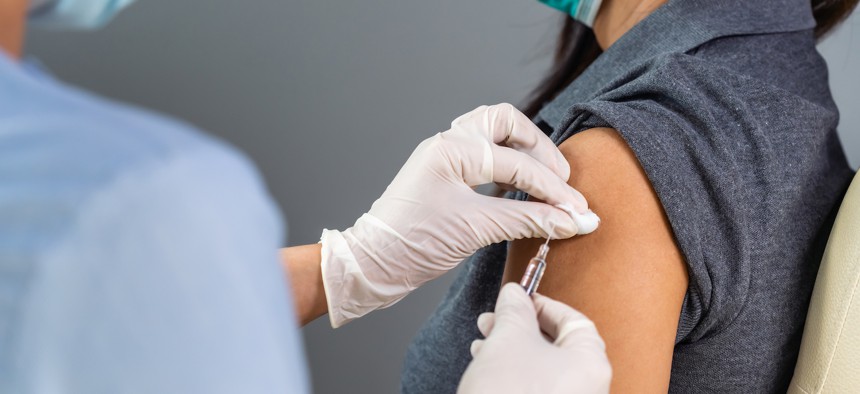There was a lot of talk over the weekend about whether New York was or was not falling behind in getting coronavirus vaccines out to the public. The latest data from the Centers for Disease Control and Prevention, as well as a running count by Bloomberg News, show the Empire State ahead of other large states like Florida when it comes to the number of vaccinated people per 100,000 residents. Yet, there nonetheless appears to be a significant backlog in distributing hundreds of thousands of doses in the Empire State despite the growing list of eligible people. About 110,000 people in five boroughs have gotten their first shots, as of Monday, and about 300,000 statewide.
More than half of the doses available to public and private hospitals remain unused, according to Gov. Andrew Cuomo, who is now threatening $100,000 fines to hospitals that do not use their vaccine inventory this week. “I need them to take personal responsibility for their hospitals,” Cuomo said of five key officials in the state. “We want those vaccines in people’s arms. … We need them to administer the vaccines faster.” New York City Mayor Bill de Blasio, who was one of the five officials named by Cuomo, said Monday that logistical issues have hampered the otherwise “smooth” rollout of the vaccine.
Yet, all the talk about how many doses have been administered misses a critical point. The number of vaccinated people will begin accelerating this week as the first New Yorkers get their second doses.
The first New Yorkers received their first shots of a COVID-19 vaccine three weeks ago, which means that Monday is the first day when people would start getting the second dose of the vaccines developed by Pfizer and Moderna. However, it still takes a couple weeks after both doses are administered to achieve 95% protection, which means that the state is only starting the monthslong process to achieve herd immunity.
Vaccine counts are quickly becoming a key metric of success for state and local governments. COVID-19 caseloads are continuing to rise across the state, and the nation as a whole has posted record daily deaths and total hospitalizations in recent days. Getting people inoculated offers a path out of the pandemic, but that all depends on the speed of the distribution process. “We are in a war-like situation,” New York City Council Health Committee Chair Mark Levine tweeted Sunday. “We need to be vaccinating TWENTY FOUR-SEVEN. We are losing precious time.”
While New York City has the goal of vaccinating 1 million people by the end of January, the current pace of distribution suggests that it could be years before 85% of New Yorkers (the percentage experts estimate would be needed to achieve herd immunity) are inoculated against the coronavirus. Tallying how many people have received both vaccine doses would create a baseline for how many people are protected overall (especially given the outstanding questions about how long people will be immune to the virus).
Two doses are required to get nearly full immunity, while getting one shot offers much more limited protection. That is why experts say no one should doubt the efficacy of the vaccines just because someone got sick after getting the first shot. The number of people who have received two shots also highlights how the total number of doses received by the state is double the number of people that can actually get vaccinated – at least until a single dose alternative likely becomes available later this year.
The number of people who get vaccinated over the next few weeks will not directly affect the fight against the pandemic in the short term. Thousands of people are getting infected with COVID-19 every day in New York. Some of those cases will drive increases in hospitalizations and deaths. No matter how fast the distribution process ramps up in 2021, it cannot come fast enough to keep the second wave of the coronavirus from sweeping across the state. That means that the number of truly immune people is a lagging indicator of progress. Yet, it is nonetheless the strongest signal of the pandemic-free future to come.


